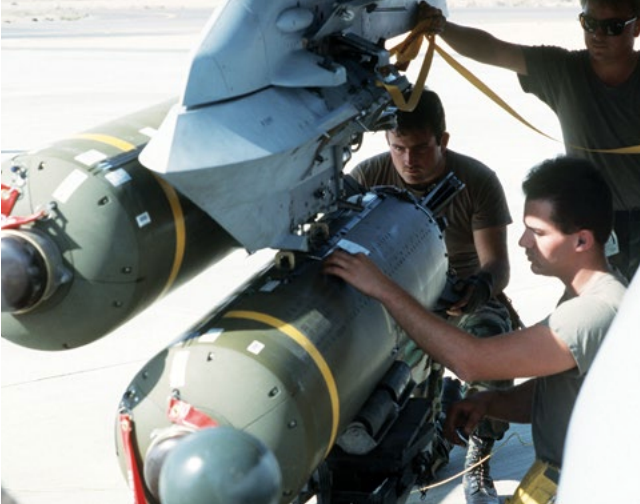Passive Attack Weapon is a nonexplosive, kinetic penetrating area weapon for use against sensitive targets.
The CBU-107’s penetrator rods limit collateral damage and do not scatter potentially contaminating debris when used against enemy WMD stockpiles. The weapon glides toward its target after release.
Before impact, its inner chamber begins to rotate, and projectiles are ejected in rapid succession by centrifugal force, penetrating targets within a 200-ft radius.
The weapon contains various-size, penetrating projectiles but no explosive. Full production was completed in six months. The weapon was used during Iraqi Freedom.
Contractors: General Dynamics (kinetic energy penetrator payload and canister); Lockheed Martin (WCMD); Textron (tactical munition dispenser kit).
First Flight: 2002.
IOC: December 2002.
Active Variant: •CBU-107A. Centrifugally dispersed, armor-penetrating weapon with Wind-Corrected Munitions Dispenser (WCMD) tail kit.
Dimensions: Length 7.7 ft, diameter 15 in.
Performance: Delivers a high-speed volley of nearly 4,000 metal projectiles in three sizes from a single canister; projectiles: 15-inch rods (350), 7-inch rods (1,000), and small-nail size (2,400).
Guidance: INS (via WCMD tail kit) and GPS-data (via aircraft) prerelease.
Warhead: Non-explosive projectiles.
Integration: B-52, F-15E, F-16C/D.
